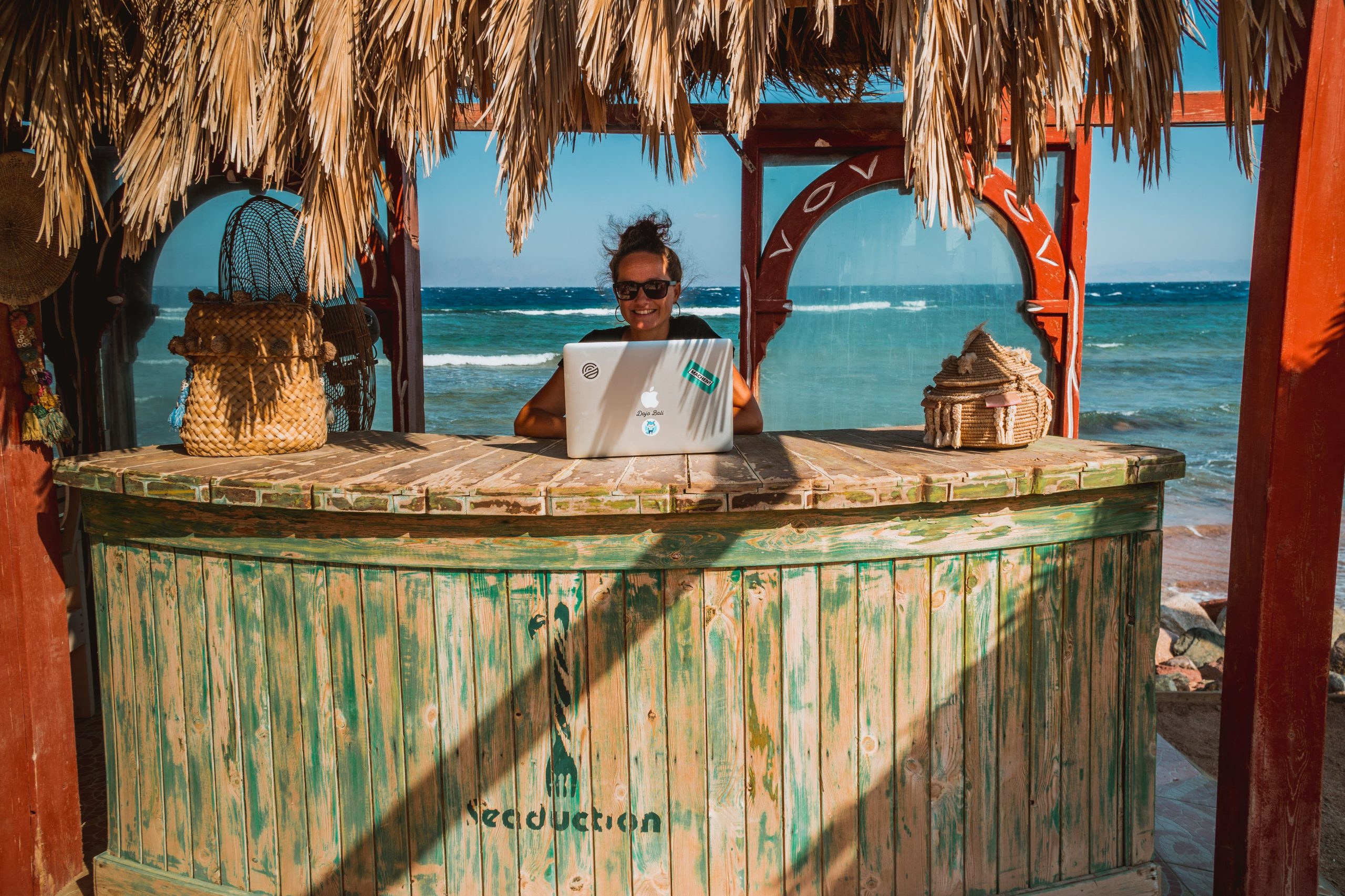What does your work environment look like? Do you work from a(n) (home)office? And is this office always at the same spot? Or are you perhaps travelling and working at the same time? The growth of remote work trip experiences has gotten an impulse through and after the COVID-19 pandemic. But how can we describe these remote work trip experiences and can they influence well-being? Our latest study tried to get a better understanding of this emerging trend.
Remote work: freedom?
Frequently, the term ‘remote work’ has been connected with working from home. Based on this definition, though, workers would be confined to one physical location. Throughout the pandemic, while some places or countries slowly opened their borders again, ‘remote work’ literally started to cross borders as people could do their work also from other locations. These included places of leisure including coffee shops, hotel rooms, other types of accommodation or even while travelling.
Digital Nomads vs Remote work trips vs Business travels
In previous studies, the impact of remote work on work processes and the home environment has been studied. For that reason, this study has focused on the combined experience of work and leisure travel experiences: remote work trips.
What we see here, is that border between work and leisure is becoming more blurry.
New terms such as ‘digital nomads’ have become buzzwords in a post-pandemic world. But are remote trips the same thing that digital nomads do? Not entirely. The main difference is that digital nomads are usually associated with permanent travel whereas remote work trips include a wide range of shorter or longer trips, varying in frequency. Some remote workers may take a day trip to Vienna and work while travelling on the train, while others organise three weeks of ‘home office’ which they conduct while exploring a new destination with friends.
What about business travels then? Compared to remote work trips, business travels are much less flexible as the workers have to go to a designated location – leaving little to no room for personal desires and preferences.
Remote work trips and employees’ well-being
Although there are clear benefits to working remotely including a high level of flexibility, combining work and leisure and autonomy in organising one’s schedule – there might also be some downsides to this phenomenon that may impact employees’ well-being. Another buzzword we tend to hear frequently in media is ‘work-life balance’.
However, how can employees who combine work and leisure through remote work, really find this balance? Can we then even speak about a balance? Another point is that employees may experience frustration because of a lack of balance and experience difficulties in staying productive. These are assumptions and only with a deeper understanding of the topic of workers’ well-being while travelling remotely, we can learn our remote work trips can be used to improve employee welfare.
Well-being can be understood through positive psychology. Subjective well-being assumes that a good life is equal to a person liking their life. The PERMA model is in line with this assumption and bases itself on the idea that life satisfaction could be achieved through fulfilling five life domains including Positive emotion, Engagement, Relationships, Meaning and Accomplishment (PERMA). This study will therefore base itself on this model to discover remote workers’ well-being
Methodology
In our study, a deep topological data analysis approach (TDA) was applied. With the help of machine learning, over 150k initial posts were gathered based on common hashtags including #workfromanywhere, #travelandwork, #workandtravel, #digitalnomad. These posts went through a detailed data cleaning and analysis process, resulting in 32,881 Instagram posts to be analysed for this study. These revealed three clusters with in total 23 elements of remote work trip experiences that potentially influence well-being.
Results
Below the three clusters and the 23 elements which came out of the study, are presented. These elements are potentially linked to well-being and argue that remote work trips in fact can improve well-being.
These include:
Cluster connected to work and well-being:
Elements: Work is work; Workplace you like; Stay connected online
Cluster connected to travelling and well-being
Elements: Beauty and nature; The view; The sunset; Escape; Discovering new places; Travel the world; Food adventures; Mountains; On the road
Cluster connected to subjective well-being
Elements: Connection with the place; Feeling & reflection; Happy place; Self-care; Focus on positive; Life appreciation; Lost in a moment; Life’s joy; Positive beginning of the day/week; Time with kinds
The full findings and graphs can be read in the journal article – see link below.
Conclusion
The study’s goal was to discover the potential benefits of remote trip experiences. More detailed, it focused on the workers’ well-being and approached the data through the PERMA model. After analysis, 23 dimensions came forward that is linked to employees’ well-being. This study contributes to a further understanding of how travel could affect remote work arrangements linked to well-being. In addition, by combining leisure and work literature, the study helps in creating the bigger picture of understanding the positive elements for the well-being of remote work trip experiences. With this knowledge, tourism providers such as DMOS (destination management organisations) could focus more on targetting remote workers and promoting and designing environments that fulfil the needs of remote worker’s ‘workation’.
Do you already know where your next remote work experience will take place? Take yourself out and explore!
Cite as:
Chevtaeva, E., Neuhofer, B., Egger, R. and Rainoldi, M. (2023) Travel while working remotely: A topological data analysis of well-being in the remote work trips experience. Journal of Travel Research.
Read the full article here:
Link to the Full Paper – Journal of Travel Research
